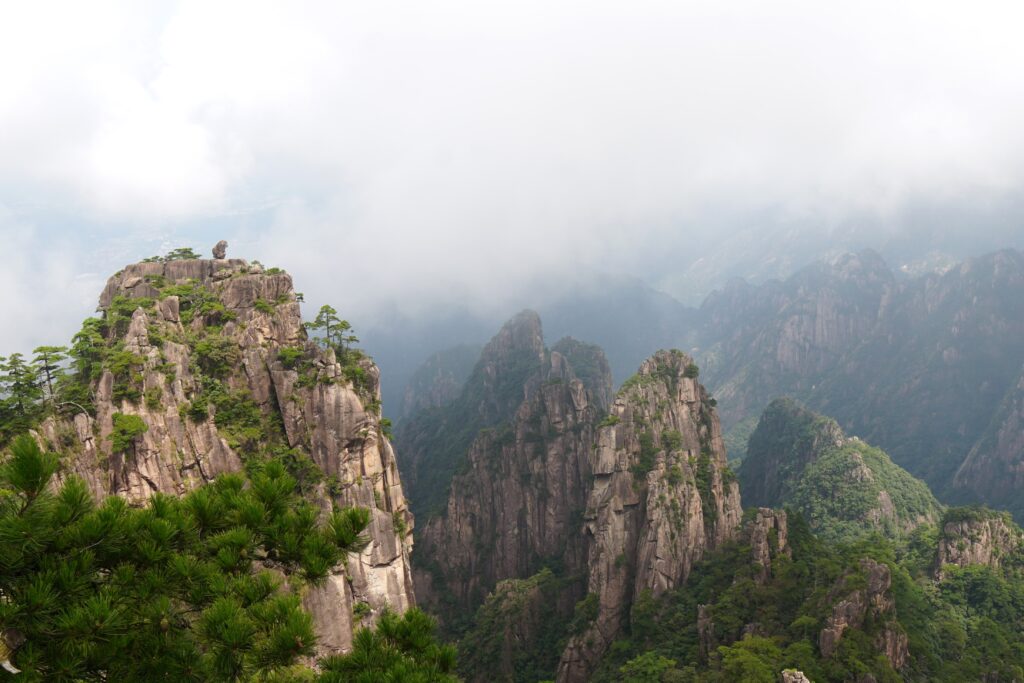Welcome back to part two of our journey to Huangshan! In our last instalment, we explored the majestic mountains, gave you some hiking tips and introduced you to the culinary delights of Anhui Province and the Huangshan region. Today I’m taking you to Hongcun, one of the most famous and undoubtedly the most beautiful villages in the area.

For those of you who read the first article, the name Hongcun may already ring a bell, as we recommended it as a place to stay in Huangshan.
Hongcun is characterised by its well-preserved Ming and Qing Dynasty architecture and picturesque scenery. The village was founded in the 12th century and has preserved its historical structure and cultural heritage to this day.

The village is famous for its unique waterways and crescent-shaped ponds, which play an important role in the daily lives of its residents. Designed according to the principles of Feng Shui, these waterways and ponds channel the flow of energy (Qi) and create a harmonious balance between nature and man. These carefully crafted elements are designed not only to promote the well-being and happiness of the residents, but also to create a positive atmosphere for the entire village. With traditional dwellings, ancestral halls and impressive stone bridges, the village paints a fascinating picture of traditional Chinese rural culture.

In 2000, Hongcun and the neighbouring village of Xidi were inscribed on the UNESCO World Heritage List. As well as being a popular tourist destination, Hongcun is also visited by artists such as painters and photographers who are inspired by its beauty and historic charm. Hongcun was also used as a filming location for Ang Lee’s 4-time Oscar-winning film ‘Crouching Tiger & Hidden Dragon’.

If you’ve already booked a hotel in Hongcun, you can just skip ahead to the next section. For anyone else travelling, here are a few tips:
Tips for your visit:
- We think one day is enough to see the main attractions of the area and relax in a restaurant or quiet spot to enjoy the scenery.
- It’s advisable to book transport directly through your hotel to avoid the hassle of finding a ride. Private transport prices are usually reasonable and group tours are often available, offering potential savings. Public taxis can be scarce in Hongcun, and haggling with local drivers may not be for everyone. Another option is to take a bus from places like Huangshan City, Tangkou or Xidi, although this means less flexibility as buses only run a few times a day.
- We don’t think a guided tour of the village is necessary; everything is well signposted, some in English, and handy translation apps are available for any unforeseen language barriers. It is also not necessary to bring provisions, as there are plenty of small restaurants and shops on site.
- A map of the village can be found here, but you can also pick one up at the ticket office on arrival. Speaking of which, the current entrance fee is 104 RMB (about 14 EUR) per person. There are additional charges for restaurants, teahouses, shops and souvenirs, and some museums may charge a small fee.
Now, let’s explore some of Hongcun’s most beautiful attractions. As mentioned above, it’s the lakes and waterways that make Hongcun so attractive. At the southern entrance lies Nanhu Lake (南湖) – the South Lake.


Created over 600 years ago during the Ming Dynasty for water supply, it adds natural beauty to the surrounding area and has attracted tourists for centuries. Its calm surface acts as a natural mirror, reflecting the surrounding traditional buildings and lush scenery, adding to its picturesque appeal. These reflections add to the scenic beauty of the lake, making it a popular subject in Chinese art and photography. Hundreds of art students often gather on its shores, trying to capture a particular moment or perspective of the lake on canvas. If you find a painting you like, you can buy it on the spot – trading is almost an art form in itself in China. 😂

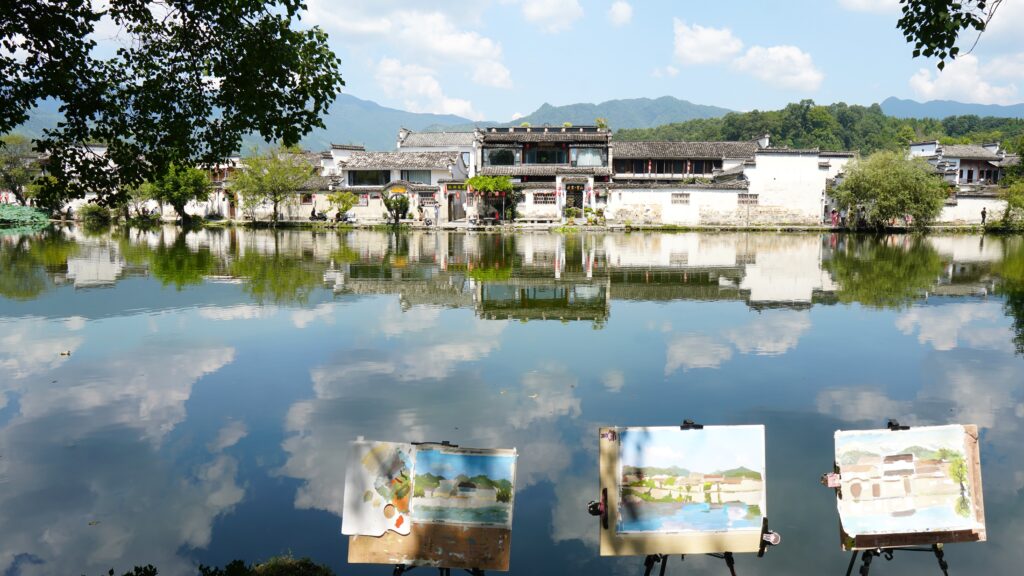
The Moon Pond (Yuezhao) is a water basin at the heart of Hongcun, named for its crescent shape. Like its larger counterpart, Nanhu Lake, the Moon Pond dates back to the Ming Dynasty. Originally used as a reservoir for irrigation and fire protection, the pond plays a central role in traditional village life. Its crescent shape and layout follow Feng Shui principles, symbolising harmony and balance. Like Nanhu Lake, the Moon Pond is known for its bright reflections on the surrounding buildings and trees, creating a picturesque atmosphere.

Adjacent to the Moon Pond is the former residence of the Wang family, a magnificent complex adorned with elaborate wood carvings, intricate stonemasonry and finely crafted brick structures.

Designed according to Feng Shui principles, the architecture harmonises with the surrounding natural landscape. The residence consists of several courtyards, houses, ancestral halls and pavilions connected by winding corridors and gates. Each area has a specific function, reflecting the hierarchy and lifestyle of the family. Particularly impressive are the intricately decorated doors and windows and the detailed ceiling paintings.

During the Ming and Qing Dynasties, the Wang family were wealthy and influential, particularly in trade. Through shrewd business dealings and strategic alliances, they amassed considerable wealth and promoted education by sponsoring numerous scholars who held important positions in the administration and military.
Built in 1855 during the late Qing Dynasty, Chengzhi Hall served as the family’s ancestral hall and is a symbol of the wealth and status of the aforementioned Wang family.

It is an example of traditional Chinese residential architecture and covers an area of approximately 2,100 square metres with 60 rooms. The building is famous for its intricate wood carvings on doors, windows and beams, depicting landscapes, animals, figures and mythological scenes with precision and artistry.

There are many other impressive buildings, small parks, courtyards, romantic waterways and more. Take your time to explore the streets of this beautiful village, not only focusing on the main attractions, but also on the surprises that await you around almost every corner.
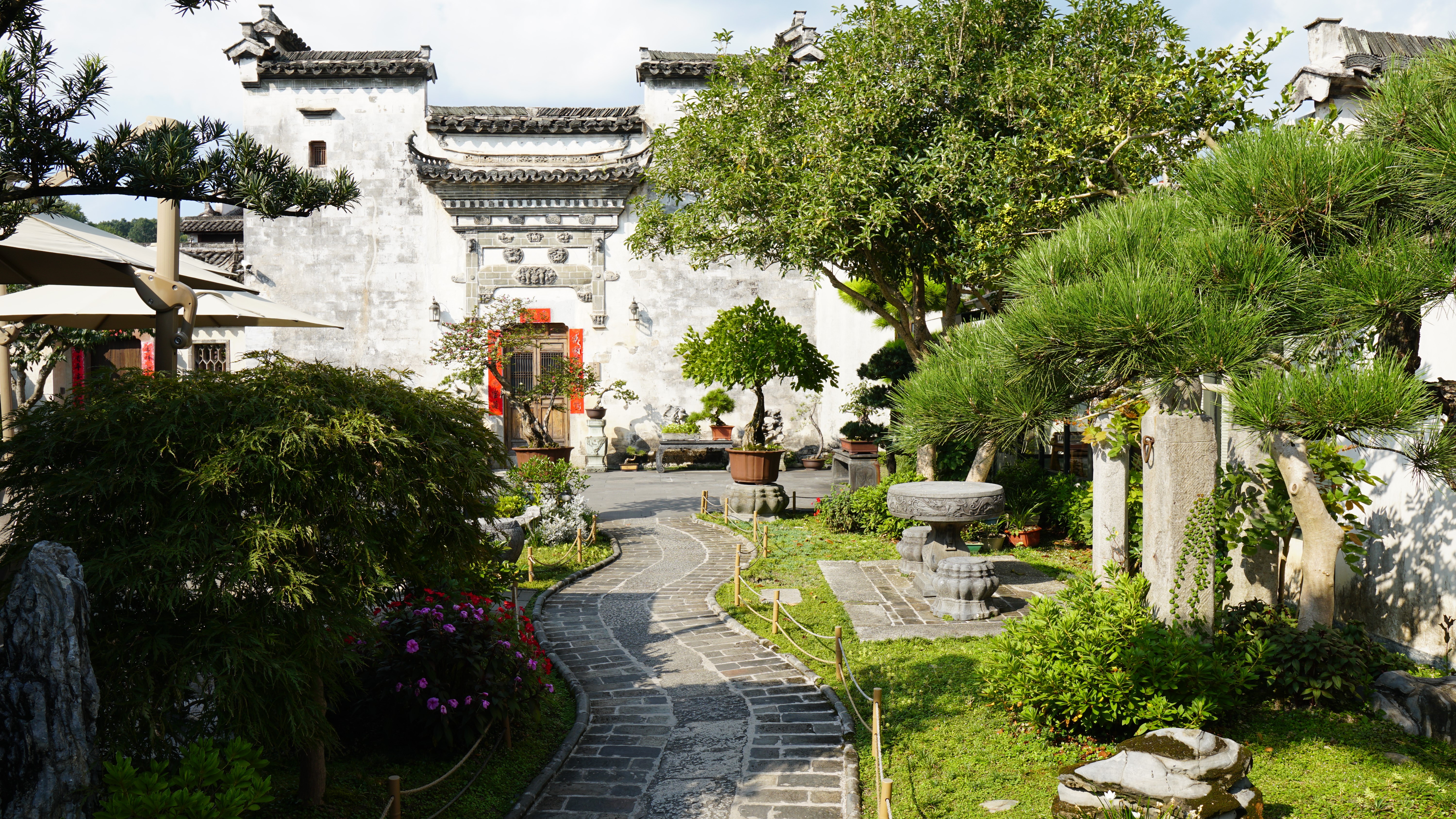
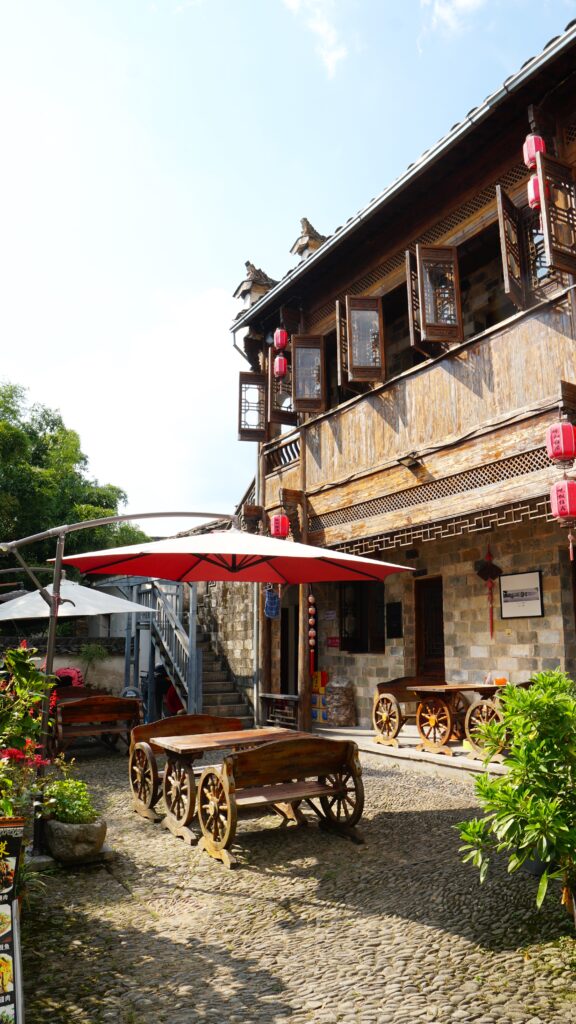

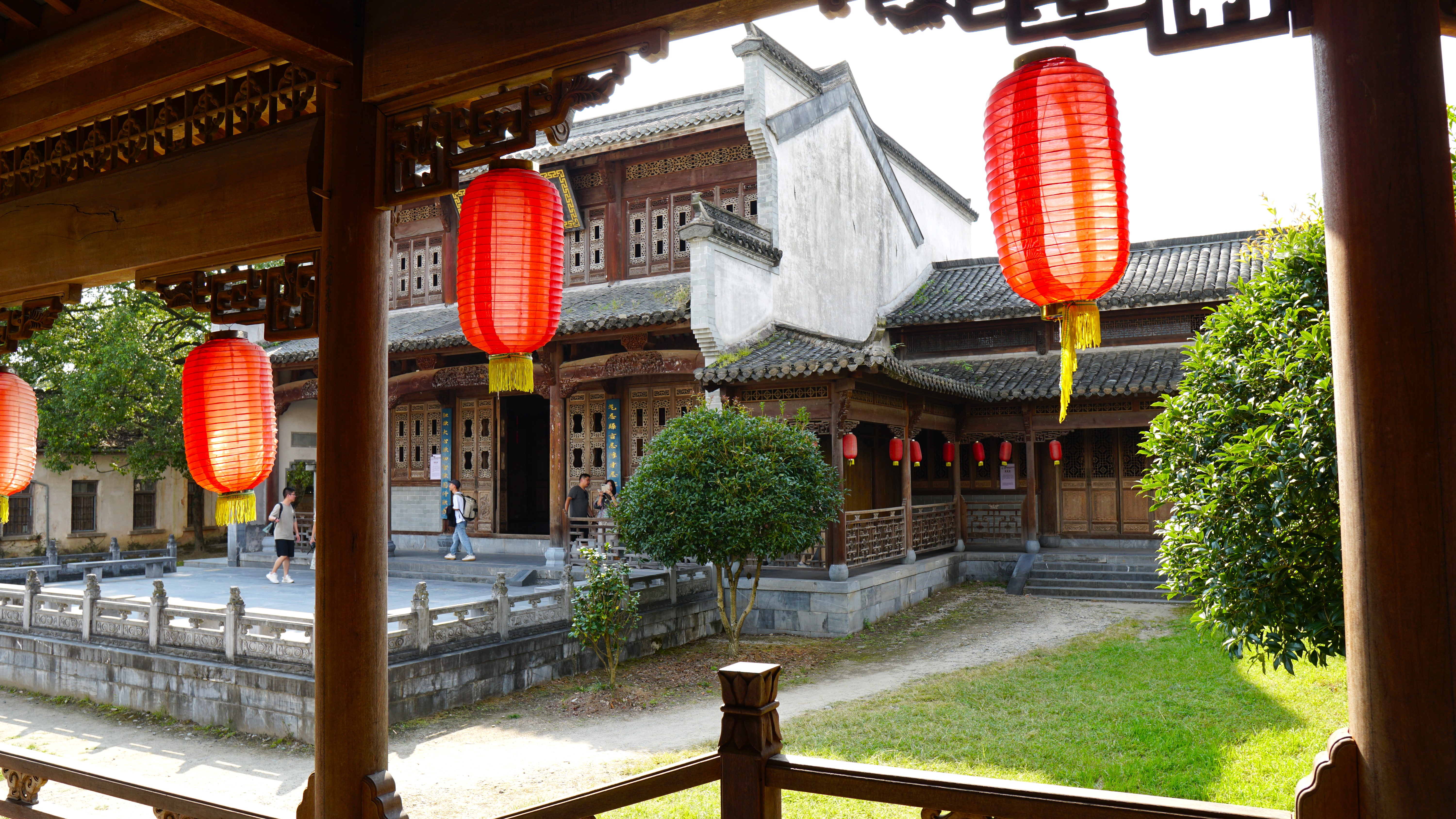
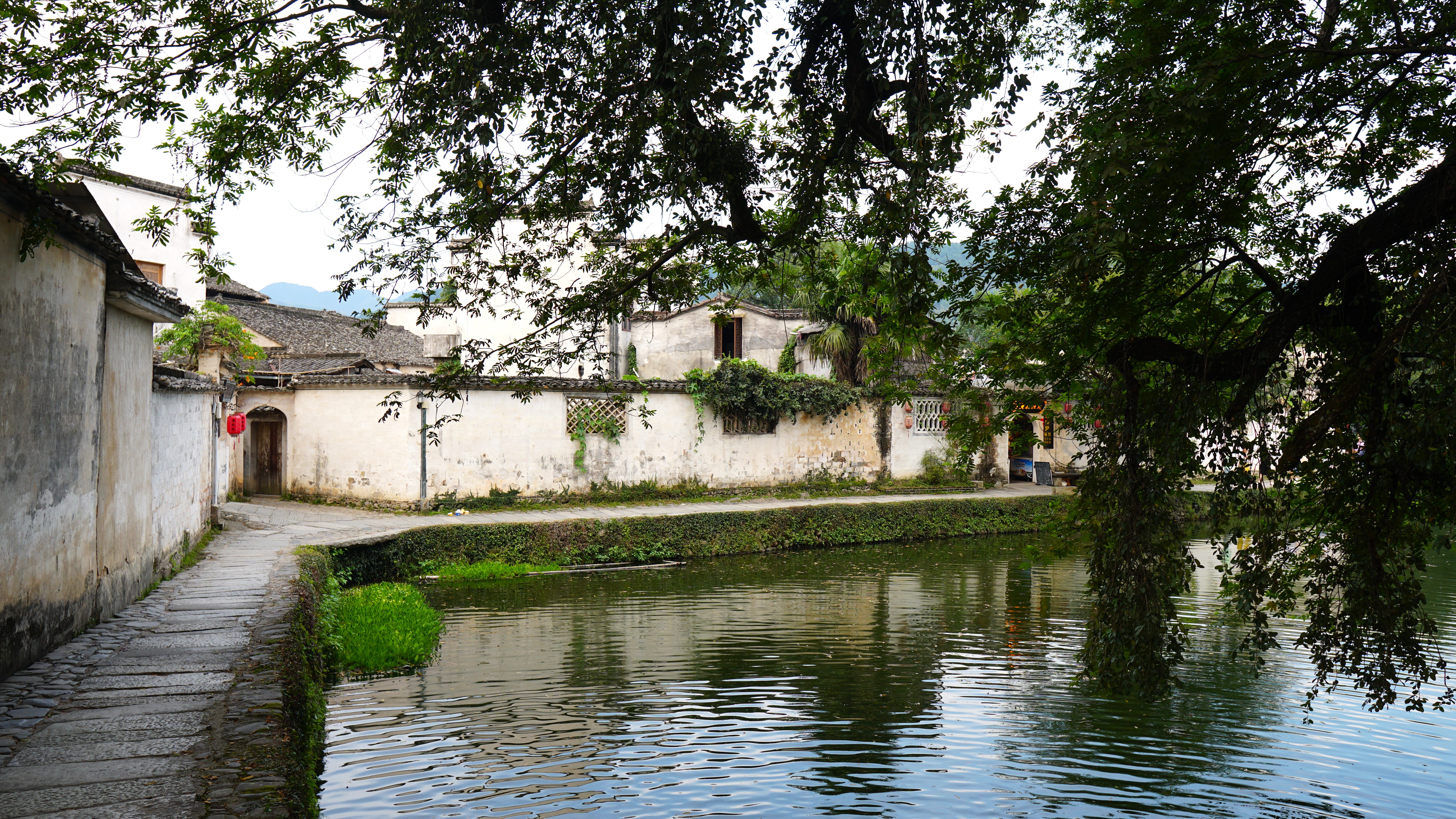

Let’s talk about food. In Hongcun, there’s a wide range of authentic restaurants, snacks and little delicacies (like mung bean cakes, etc.). As it was a hot summer’s day, we were in the mood for something refreshing, light and not too spicy.
We opted for a charming little eatery (管老太 Guan Lao Tai) near the old ginkgo tree (there are plenty of restaurants in the area). Here’s what we ordered:

手工小笼包 (Shǒu Gōng Xiǎo Lóng Bāo) – “handmade small steamed dumplings” – are a version of the Shanghai Xiaolongbao we’ve featured in another blog post. Xiaolongbao are Chinese steamed dumplings filled with savory meat and a delicious broth, traditionally served steamed. In fact, there’s no real difference from the well-known xiaolongbao; the prefix 手工 simply means handmade.

Sǔngān Ròusī Miàn (笋干肉丝面), a traditional Chinese noodle dish, features dried bamboo shoots (笋干), thinly sliced pork (肉丝), and wheat noodles (面) as its main ingredients. The bamboo shoots are soaked and cooked, while the pork is marinated and stir-fried. These elements are then combined with the cooked noodles, seasoned with garlic, spring onions, and spices, and served alongside crispy pak choi. This dish boasts a luxurious umami flavor, complemented by the savory essence of the marinade, and a fascinating textural interplay of chewy bamboo shoots, tender pork, and silky noodles. Additionally, it carries a delightful aroma of ingredients such as garlic and spring onions.
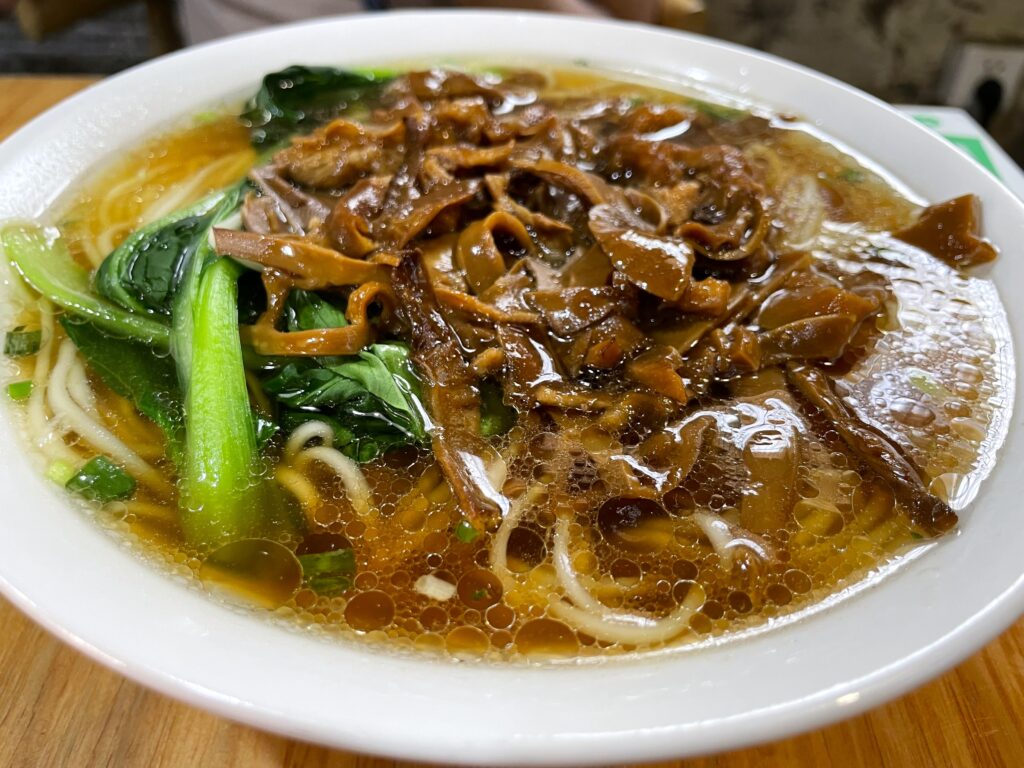
黄山臭豆腐 (Huángshān chòu dòufu) or 安徽臭豆腐 (Ānhuī chòu dòufu) is a variation of the well-known Stinky Tofu (which we’ve featured in another post) from Anhui province, specifically the Huangshan region. It’s fermented tofu, known for its intense and often unpleasant smell. This version is fried and served with chilli sauce and coriander. The crunchy outer layer of the tofu contrasts pleasantly with the soft, creamy interior. The chilli sauce adds a spicy, tangy note that complements the surprisingly mild, slightly sour and umami-rich flavour of the fermented tofu. The citrusy aroma of coriander adds a refreshing component.

绿豆豆花 (Lǜdòu Dòuhuā) is a traditional Chinese dessert made of soft tofu pudding (豆花) and green mung beans (绿豆, lǜdòu).

Tofu pudding is made by coagulating soy milk. The process is similar to making cheese, where the milk curdles and turns into a solid mass. Once the soy milk has curdled, it’s poured into moulds and chilled until firm. The green mung beans are cooked until soft and lightly sweetened.
This delicious dish has a mild, slightly sweet flavour with an earthy note from the beans and a smooth, silky texture from the tofu.
Sticky rice balls in fermented rice broth (酒酿汤圆 or Jiǔniàng Tāngyuán) are a traditional Chinese dessert.

We tried these small, sticky rice balls, called tangyuan, in a restaurant in Frankfurt. What makes this dish special is the rice broth called Jiuniang, which is made from cooked sticky rice and fermented with rice wine. The combination of the slightly alcoholic taste of the jiuniang and the soft, sticky rice balls is very pleasant.

In addition to hot water, which is usually offered for free in China, we ordered soy milk (豆浆 – dòu jiāng) – a traditional Chinese drink made from soybeans. The soybeans are soaked, ground, mixed with water and boiled. The taste of soy milk is creamy and slightly nutty, similar to cow’s milk, but with a slightly sweet note.
Walking through the alleys of Hongcun, we noticed a shop selling rice wine. Here we found 桂花米酒 (Guìhuā Mǐjiǔ), a Chinese drink made from rice wine (Mǐjiǔ) and osmanthus flowers (Guìhuā). The osmanthus flowers give the drink a sweet floral aroma and a delicate flavour. This shop also sells several varieties with fruity notes.



